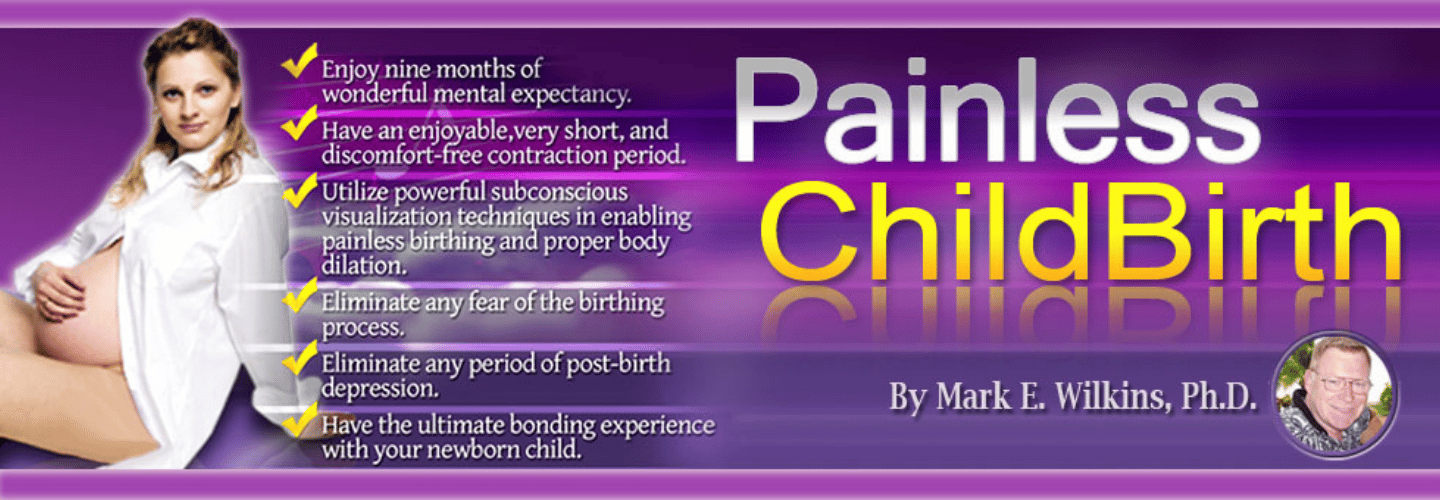
Trusted hypnosis techniques serve as a proven method for promoting relaxation during labor, offering women a natural and empowering approach to managing the intensity of childbirth. By tapping into the power of the mind, expectant mothers can harness techniques such as deep breathing, visualization, and positive affirmations to cultivate a sense of calm and inner strength during labor. These methods not only assist in pain management but also pave the way for a more positive and harmonious birthing experience. Discover the transformative potential of hypnosis in enhancing childbirth – a journey worth exploring for those seeking a holistic and empowering approach to labor.
Benefits of Hypnosis During Labor
Hypnosis during labor offers mothers a natural and effective way to manage pain and anxiety, potentially reducing the need for traditional pain relief medications. By utilizing hypnosis for pain management, women can enhance their childbirth education, empowering them to better cope with intrapartum pain. This technique not only helps reduce fear and anxiety but also promotes relaxation during labor, creating a more positive birthing experience. Through self-hypnosis for intrapartum, mothers can tap into their inner resources to navigate the challenges of labor without the use of medication, providing a medication-free pain management option.
Research suggests that hypnosis can lead to shorter labor stages and improved Apgar scores for babies, indicating the holistic benefits of this approach. By incorporating hypnosis into their childbirth preparation, women can cultivate mental fortitude and emotional resilience, enabling them to face labor with confidence and calmness. This method offers a valuable tool for women seeking a more natural and empowering way to manage pain during childbirth.
Techniques for Deep Breathing
Mastering the art of deep breathing is an essential skill in hypnosis for labor. It allows for a deliberate focus on relaxation and stress reduction. Deep breathing techniques enhance oxygen circulation in the body during labor. They also serve as a powerful tool for managing discomfort and promoting a sense of control.
Understanding how to time breaths effectively can further amplify the benefits of deep breathing in hypnosis for a smoother labor experience.
Breathing for Relaxation
Utilizing deep breathing techniques is a vital aspect of promoting relaxation and managing stress during labor. Deep breathing exercises play an essential role in stress reduction, pain management, and overall well-being during childbirth.
By focusing on controlled breathing, individuals can increase oxygen flow to the body, aiding in pain management and creating a sense of calmness. These techniques are often integrated into hypnosis practices for labor, enhancing relaxation and comfort throughout the birthing process.
The act of deep breathing not only helps in physical relaxation but also contributes to a sense of control, allowing individuals to feel more empowered and at ease during labor. Mastering the art of deep breathing can greatly improve the childbirth experience.
Benefits of Deep Breaths
Deep breathing techniques, essential for relaxation during labor, offer a myriad of benefits. They promote oxygen flow, reducing stress, and enhancing pain management. During labor, controlled deep breathing can lower heart rate and blood pressure, creating a calming effect.
Deep breaths help manage labor pain by distracting from discomfort and providing a sense of control. Additionally, proper deep breathing techniques can improve oxygen supply to the baby, supporting their well-being. Focused deep breathing enhances mental focus, reduces anxiety, and promotes a sense of empowerment.
Incorporating deep breathing into labor can contribute considerably to relaxation, stress reduction, and overall well-being for both the mother and the baby.
Timing Breaths Effectively
Integrating proper timing of breaths is pivotal for maximizing the benefits of deep breathing techniques during labor, particularly in promoting relaxation and managing pain effectively. Timing breaths effectively involves inhaling slowly through the nose, holding the breath briefly, and exhaling slowly to increase oxygen flow and reduce stress hormones.
By coordinating breaths with contractions, individuals can maintain focus, calmness, and a sense of control during labor. Regular practice of deep breathing before childbirth can familiarize individuals with the technique, facilitating its implementation during labor.
Incorporating deep breathing exercises into hypnosis techniques can further enhance relaxation and contribute to a positive birthing experience. Mastering the art of timing breaths effectively is a valuable skill that can aid in coping with the challenges of childbirth.
Visualization for Relaxation
Regularly incorporating visualization techniques into your labor preparation can greatly enhance relaxation and coping strategies during childbirth. Visualization involves creating mental images that help distract from pain by focusing on positive and calming scenes or scenarios. By visualizing these personalized images, individuals can reduce anxiety, stress, and the perception of pain during labor. Studies suggest that practicing visualization regularly before childbirth can enhance its effectiveness in promoting relaxation.
During labor, visualization can serve as a powerful tool to help expectant mothers stay calm and focused. By immersing oneself in a peaceful mental space, women can better manage the intensity of contractions and navigate the challenges of childbirth. These mental images can be tailored to suit individual preferences, making the experience more comforting and empowering. Through the use of personalized visualization techniques, women can harness the mind-body connection to promote relaxation and emotional well-being during labor.
Power of Positive Affirmations

Harnessing the power of positive affirmations during labor can greatly transform the birthing experience by instilling confidence and promoting relaxation. Positive affirmations used in hypnosis during labor serve as empowering tools, replacing fear with a sense of empowerment.
These affirmations focus on reinforcing positive statements about childbirth and relaxation, aiming to create a mindset that enhances the overall birthing experience. By repetitively reciting these affirmations, women can effectively reduce anxiety levels and induce a state of relaxation. Additionally, affirmations play an important role in shaping the perception of pain, helping individuals feel more in control during labor.
Self-Hypnosis for Pain Management
Self-hypnosis for pain management offers a powerful tool for women during labor, promoting relaxation and pain relief through focused techniques. By harnessing the benefits of self-hypnosis, expectant mothers can cultivate a sense of control, reduce anxiety, and enhance their overall childbirth experience.
Exploring the techniques, benefits, and preparation involved in self-hypnosis can equip women with valuable skills for managing pain and promoting a positive birthing environment.
Benefits of Self-Hypnosis
Utilizing self-hypnosis techniques for pain management during labor can greatly reduce the reliance on anesthesia and painkillers, providing a natural and empowering approach to coping with childbirth discomfort. Self-hypnosis promotes a positive mindset, helping women confront labor discomfort with increased tolerance and reduced fear.
Through relaxation scripts and consistent practice, self-hypnosis enhances alertness, allowing mothers to stay in control of their thoughts and actions during childbirth. This technique fosters a deeper sense of empowerment, enabling women to bond with their birthing partners and experience the birthing process more actively.
Techniques for Pain Relief
Amid the challenges of labor, mastering techniques for pain relief through self-hypnosis can offer women a powerful tool for managing discomfort and enhancing their birthing experience.
Self-hypnosis techniques in labor aim to reduce pain perception through focused relaxation and mental imagery. By attending HypnoBirthing classes, women can learn how to alter their response to contractions and interpret sensations as pressure rather than pain.
This approach empowers women to maintain a sense of control during childbirth, promoting calmness and reducing the need for pharmacological interventions. Through self-hypnosis, women can harness their mental strength to navigate the intensity of labor while fostering a more positive and empowering birthing experience.
Practice and Preparation
Preparation and practice play a significant role in mastering effective pain management techniques using self-hypnosis during labor. Self-hypnosis for pain management empowers individuals to control their thoughts and actions, aiming to reduce fear, enhance relaxation, and promote a sense of empowerment.
By regularly practicing relaxation scripts and audios, individuals can increase the likelihood of achieving a positive birthing experience. Consistent self-hypnosis practice is essential for effectively managing contractions and minimizing anxiety during childbirth.
Engaging in self-hypnosis not only aids in fear reduction but also facilitates bonding with the unborn baby, preparing both the mind and body for the labor process. This holistic approach to pain management through self-hypnosis can lead to a more relaxed and fulfilling birthing experience.
Empowerment Through Hypnosis
Empowerment through hypnosis during labor cultivates a sense of inner strength and resilience in women, fostering a mindset of confidence and control amidst the birthing process. This technique enables mothers-to-be to tap into their inner resources, leading to a positive birthing experience. Through hypnosis, women can achieve deep relaxation, reducing fear and anxiety, and maintaining a sense of control over their bodies. By promoting a calm and focused mindset, hypnosis helps in coping with labor pain more effectively, allowing women to shift their focus towards comfort and confidence.
The following imagery illustrates the empowering effects of hypnosis during labor:
- Feeling a deep sense of relaxation washing over the body, easing tension and promoting a sense of calm.
- Visualizing a shield of resilience and strength surrounding the mind, providing a sense of control and empowerment.
- Embracing a positive outlook on the birthing process, focusing on the joy of bringing new life into the world.
- Channeling inner confidence and determination to navigate through labor with grace and composure.
Cultivating Trust in Natural Birthing

Cultivating trust in natural birthing involves embracing the innate capabilities of the body to labor and deliver without instilling fear. HypnoBirthing, a technique that promotes trust in the body's natural ability, emphasizes relaxation methods such as self-hypnosis to foster a positive mindset during childbirth. By reframing contractions as surges and discomfort as manageable pressure, individuals can move away from the fear-tension-pain cycle. This approach empowers participants to trust the birthing process and cultivate an empowerment mindset.
Through HypnoBirthing classes, individuals learn to avoid negative expectations and language that may contribute to fear during labor. By focusing on the body's natural abilities and adopting relaxation techniques, trust in the birthing process is strengthened. This trust enables individuals to approach childbirth with confidence and a positive outlook, ultimately leading to a more harmonious birthing experience. By fostering trust in the body's innate capabilities and embracing relaxation methods, individuals can navigate the challenges of labor with a sense of empowerment and calm.
Harmonious Birthing Experience
To achieve a harmonious birthing experience, utilizing hypnosis techniques can greatly enhance relaxation and reduce anxiety for individuals during labor. Hypnosis techniques provide a valuable tool for expectant mothers to maintain a sense of calm and control during the childbirth process. By incorporating hypnosis into their birthing plan, women can develop effective coping mechanisms to manage pain and discomfort, ultimately leading to a more positive birthing experience. This holistic approach focuses on the mind-body connection, allowing mothers to tap into their inner strength and resilience during labor.
- Hypnosis techniques foster relaxation and reduce anxiety levels.
- They empower women to stay in control and maintain a sense of calm throughout childbirth.
- By managing pain effectively, hypnosis contributes to a positive birthing experience.
- Hypnosis enhances coping mechanisms, enabling women to navigate through discomfort during labor with greater ease and confidence.
Frequently Asked Questions
Can Hypnosis Be Used During Childbirth?
Hypnosis is a valuable tool during childbirth, offering benefits such as pain relief, relaxation, and empowerment. Its effectiveness lies in enhancing the mind-body connection, promoting relaxation, and reducing anxiety.
Hypnosis techniques, including hypnotic breathing and focused attention, can support women during labor by providing a non-pharmacological option for pain management. When used correctly, hypnosis can positively influence mood and help women feel more in control during childbirth.
How to Hypnotize Yourself During Labor?
During labor, self-hypnosis can be a powerful tool for relaxation. Begin by focusing on positive affirmations, deep breathing, and visualization techniques to induce a hypnotic state.
Embrace the mind-body connection through progressive relaxation and guided imagery. Guarantee a calm environment with minimal distractions.
Regularly practicing self-hypnosis techniques will build confidence and familiarity, enhancing the benefits of hypnotic relaxation during childbirth.
How Can I Stay Calm and Relaxed During Labor?
During labor, maintaining calm and relaxation is key. Incorporating breathing exercises, visualization techniques, positive affirmations, partner support, music therapy, aromatherapy benefits, and massage therapy can aid in managing stress. Engaging in water immersion techniques can also promote relaxation.
Embracing the mind-body connection is essential for a peaceful birthing experience. By utilizing these techniques, you can create a soothing environment conducive to relaxation and comfort during labor.
Which Childbirth Method Involves a Form of Self-Hypnosis?
The childbirth method that involves a form of self-hypnosis is HypnoBirthing. This approach offers numerous benefits, including natural pain relief, breathing techniques, visualization methods, positive affirmations, deep relaxation, and fostering a strong mind-body connection.
Conclusion
To sum up, the utilization of trusted hypnosis techniques during labor offers a profound avenue for relaxation and empowerment. Through deep breathing, visualization, positive affirmations, and self-hypnosis, expectant mothers can navigate the birthing process with increased confidence and control.
Trust in the natural ability of the body to labor and deliver is essential for a harmonious and fulfilling birthing experience. Embracing hypnosis as a tool for relaxation during labor can lead to a transformative and empowering childbirth journey.




